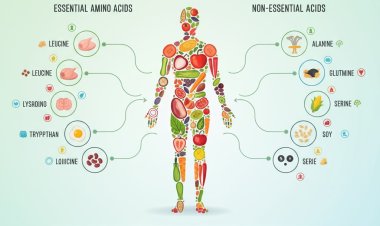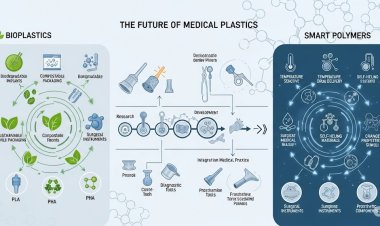Bio Lubricants Market Size to Reach $2.3 Billion at a CAGR of 3.9% by 2028
Bio Lubricants Market is expected to reach a value of USD 2.3 Billion by the year 2028.

The Global Bio Lubricants Market was valued at USD 1.9 Billion in the year 2021 and is expected to reach a value of USD 2.3 Billion by the year 2028. The Global Bio Lubricants Market is anticipated to grow to exhibit a Compound Annual Growth Rate (CAGR) of 3.9% over the forecast period.
The bio lubricants market is a growing segment of the lubricants industry that is characterized by the use of renewable and sustainable raw materials such as vegetable oils, animal fats, and synthetic esters. Bio lubricants are increasingly being used as a replacement for traditional petroleum-based lubricants due to their superior performance and environmental benefits.
Some of the key drivers of the bio lubricants market include increasing awareness of the environmental impact of traditional lubricants, rising demand for sustainable products, and government regulations aimed at reducing carbon emissions. In addition, the development of new and advanced bio-based technologies is expected to create significant growth opportunities for market players in the coming years.
Click To Get a Free Sample On the Research Study @ https://www.vantagemarketresearch.com/bio-lubricants-market-1807/request-sample
Overall, the bio lubricants market is expected to witness significant growth in the coming years as more industries and consumers shift towards sustainable and eco-friendly products.
What are Bio Lubricants?
Bio lubricants, also known as biodegradable lubricants or eco-lubricants, are lubricants that are made from renewable, biodegradable, and non-toxic materials. These lubricants are eco-friendly alternative to traditional petroleum-based lubricants that are derived from non-renewable fossil fuels and can cause environmental damage if not disposed of properly.
Bio lubricants are typically made from vegetable oils, animal fats, or synthetic esters. These materials are biodegradable and do not contain harmful chemicals or heavy metals that can harm the environment. Bio lubricants also have excellent lubricating properties and can be used in a wide range of applications, including automotive, marine, industrial, and hydraulic equipment.
The benefits of using bio-lubricants include:
Environmental sustainability: Bio lubricants are made from renewable materials that are biodegradable and do not contain harmful chemicals or heavy metals. This makes them a sustainable and eco-friendly alternative to traditional petroleum-based lubricants.
Improved performance: Bio lubricants have excellent lubricating properties and can improve the performance and lifespan of equipment. They also have a higher viscosity index, which means they maintain their lubricating properties over a wider temperature range.
Regulatory compliance: Bio lubricants are compliant with environmental regulations, such as the EPA's Clean Water Act and the EU's Ecolabel. This makes them a popular choice for businesses that need to comply with these regulations.
Reduced maintenance costs: Bio lubricants can reduce maintenance costs by extending the lifespan of equipment and reducing the need for frequent oil changes.
Improved worker safety: Bio lubricants are non-toxic and do not contain harmful chemicals or heavy metals, which makes them safer for workers to handle and use.
Overall, bio lubricants offer several benefits over traditional petroleum-based lubricants, including environmental sustainability, improved performance, regulatory compliance, reduced maintenance costs, and improved worker safety.
Bio Lubricants Market Dynamics
Increasing environmental concerns: As awareness about environmental issues such as climate change and pollution grows, more consumers are looking for sustainable alternatives to traditional petroleum-based lubricants. Bio lubricants are seen as a more eco-friendly alternative as they are derived from renewable sources and have lower carbon footprints.
Stringent regulations: Governments around the world are introducing regulations aimed at reducing carbon emissions and promoting the use of renewable energy sources. This has led to a growing demand for bio lubricants as industries look for ways to comply with these regulations.
Advancements in technology: The development of new and advanced bio-based technologies is expected to drive growth in the bio lubricants market. Innovations in raw materials, manufacturing processes, and product formulations are leading to the creation of high-performance bio lubricants that can compete with traditional petroleum-based lubricants.
Increasing demand from various industries: The demand for bio lubricants is increasing across various industries such as automotive, industrial, marine, and others. The automotive industry, in particular, is a major consumer of bio lubricants due to the increasing demand for bio-based lubricants in passenger cars, commercial vehicles, and other transportation modes.
Availability of raw materials: The availability of raw materials such as vegetable oils, animal fats, and synthetic esters is a key factor that affects the supply and pricing of bio lubricants. Changes in the availability and pricing of these raw materials can have a significant impact on the bio lubricants market.
Overall, the bio lubricants market is expected to witness significant growth in the coming years as more industries and consumers shift towards sustainable and eco-friendly products. However, the market also faces various challenges such as high production costs and limited availability of raw materials, which could hamper growth in the short term.
Buy Now Our Exclusive Bio Lubricants Market Report @ https://www.vantagemarketresearch.com/buy-now/bio-lubricants-market-1807/0
Bio Lubricants Market Challenges
High production costs: The production costs of bio lubricants are generally higher than traditional petroleum-based lubricants. This is due to the higher cost of raw materials and the more complex manufacturing processes required to produce bio lubricants. The high production costs could make it difficult for bio lubricants to compete with traditional lubricants, particularly in price-sensitive markets.
Limited availability of raw materials: The availability of raw materials such as vegetable oils, animal fats, and synthetic esters is a key factor that affects the supply and pricing of bio lubricants. The limited availability of these raw materials, particularly in certain regions, could limit the growth of the bio lubricants market.
Performance issues: While bio lubricants have several advantages over traditional lubricants, they also have some performance issues that could affect their adoption. For example, bio lubricants can have lower viscosity indices, which could affect their performance in certain applications.
Lack of industry standards: The bio lubricants market lacks industry standards and certifications, which could limit its adoption in certain industries. The lack of standards and certifications could also affect the quality and consistency of bio lubricants, making it difficult for consumers to compare products and make informed purchasing decisions.
Competition from traditional lubricants: Traditional petroleum-based lubricants are well-established in the market and have a strong customer base. Bio lubricants face stiff competition from traditional lubricants, particularly in price-sensitive markets where customers may be reluctant to pay more for eco-friendly products.
Overall, the bio lubricants market faces several challenges that could limit its growth and development. However, as more industries and consumers shift towards sustainable and eco-friendly products, the demand for bio lubricants is expected to grow, and these challenges could be addressed over time.
Bio Lubricants Market Recommendation by Vantage Market Research
Understand the market dynamics: Conduct a comprehensive analysis of the market dynamics, including the demand and supply drivers, regulatory environment, and competitive landscape. Identify the key trends and opportunities in the market, as well as the challenges and risks that could impact your business.
Focus on innovation: The bio lubricants market is characterized by a high degree of innovation and technological advancement. Focus on developing innovative products and technologies that offer superior performance and eco-friendliness. Consider partnering with research institutions, universities, and other organizations to access new technologies and stay ahead of the competition.
Develop a strong supply chain: The availability and pricing of raw materials can have a significant impact on the bio lubricants market. Develop a strong and reliable supply chain that ensures a steady supply of high-quality raw materials at competitive prices. Consider working with local suppliers and building long-term relationships with key partners.
Establish industry standards and certifications: The lack of industry standards and certifications could limit the adoption of bio lubricants in certain industries. Consider working with industry associations and regulatory bodies to establish industry standards and certifications that ensure the quality, consistency, and safety of bio lubricants.
Build a strong brand and market presence: Developing a strong brand and market presence is essential for success in the bio lubricants market. Build a strong brand that communicates the eco-friendliness, performance, and value of your products. Develop a comprehensive marketing strategy that targets key customer segments and channels.
Monitor the regulatory environment: The regulatory environment can have a significant impact on the bio lubricants market. Stay up-to-date with the latest regulations and policies that could impact your business. Consider working with regulatory bodies and industry associations to influence regulatory decisions and ensure a favorable regulatory environment for bio lubricants.
Bio Lubricants Market Regional Analysis
North America: North America is a significant market for bio lubricants, with the United States being the largest market in the region. The demand for bio lubricants in North America is driven by stringent environmental regulations, increasing consumer awareness, and the presence of a well-developed industrial sector.
Europe: Europe is another significant market for bio lubricants, with countries such as Germany, France, and the UK being major consumers. The demand for bio lubricants in Europe is driven by the increasing demand for eco-friendly products, stringent environmental regulations, and the presence of a well-developed industrial sector.
Asia-Pacific: The Asia-Pacific region is a rapidly growing market for bio lubricants, with countries such as China, India, and Japan being major consumers. The demand for bio lubricants in Asia-Pacific is driven by the increasing industrialization, growing consumer awareness, and the adoption of sustainable and eco-friendly products.
Latin America: Latin America is a small but growing market for bio lubricants, with countries such as Brazil and Argentina being major consumers. The demand for bio lubricants in Latin America is driven by the increasing adoption of sustainable and eco-friendly products, as well as the presence of a growing industrial sector.
Middle East and Africa: The Middle East and Africa region is a small but growing market for bio lubricants, with countries such as Saudi Arabia and South Africa being major consumers. The demand for bio lubricants in the Middle East and Africa is driven by the increasing adoption of sustainable and eco-friendly products, as well as the growing industrial sector.
Overall, the demand for bio lubricants is increasing across regions, driven by the adoption of sustainable and eco-friendly products, growing consumer awareness, and stringent environmental regulations. However, the demand for bio lubricants varies across regions, and businesses should carefully evaluate the market dynamics and opportunities in each region before entering or investing in the market.
Read Our Latest Press Release: Immunoassay Market- In-depth Analysis
Contact us
Eric Kunz
6218 Georgia Avenue NW Ste 1 - 564
Washington DC 20011-5125
United States Tel: +1 202 380 9727
Email: [email protected]
Website: Vantage Market Research


















